Three years ago I nearly died from a sepsis infection. An antibiotic called Levaquin saved my life. That same antibiotic, which is in the fluoroquinolone class, poisoned me from head to toe. I am still trying to recover from the damage it did to my connective tissue, nervous and digestive systems. I thought as long as I stayed away from fluoroquinolone antibiotics I would be ok. Not so. Two years ago I had strep throat and was prescribed amoxicillin. After a few days, the antibiotic produced a meningitis-like reaction which subsequently worsened my Levaquin-induced symptoms.
As you can imagine, I am terrified of ingesting antibiotics. I am also terrified for my children, husband, family, and friends. Though they have not had an antibiotic experience like me, they could. All antibiotics disrupt our microbiome, a delicate environment of bacteria affecting our immune, nervous, digestive, and endocrine systems. Antibiotics are over-prescribed and big gun fluoroquinolone antibiotics meant to kill anthrax are used for non-life threatening infections. As such, we are creating all sorts of antibiotic-resistant germs and microbial imbalances. In response to these dilemmas, doctors may soon be forced to limit prescribing fluoroquinolones for certain infections.
I have done considerable research on and self-tested all of these natural remedies at one time or another on myself or family member. My immune system isn’t stellar and having a child in pre-k, an enormous petri dish of germs, doesn’t help. In fact, as I am writing this I have a touch of a cold. But, since traveling down this experimental road, I have not needed an antibiotic since that amoxicillin fiasco, nor has my four-year-old son.
Before I share about remedies for specific infectious ailments, remember, I am not a physician and this should not be considered medical advice. Do your own research and consult your physician before beginning any new treatment.
General Health Recommendations Instead of Antibiotics
Here are some general recommendations I found helpful for overcoming any bacterial or viral infection:
- Remove sugar and processed foods from your diet. They feed bad bacteria and viruses. Your virus or infection will just love you for feeding them, making them stronger and more virulent.
- Take probiotics. When I feel the first sign of a cold coming on I take a probiotic capsule. The good probiotic bacteria will work with your body’s good bacteria to fight the virus, essentially crowding it out. Keep in mind, antibiotics kill bad bacteria and good bacteria. Antibiotics do not kill viruses. If you take an antibiotic for a virus, in my opinion, you are making the virus stronger because you are wiping out the good bacteria needed to help your immune system fight the virus.
- Exercise a little, not a lot. When you are sick your body needs to conserve energy to fight the illness. Exercising at your usual pace during an illness puts added strain on your adrenals and immune system. You don’t have to stop exercising completely, just go lightly.
- Rest and rest often. So many people I know catch a cold, continue to burn the midnight candle either at work or socially, end up with an infection, and are prescribed an antibiotic because they’ve dug themselves into an infectious grave they could have easily avoided by resting. Sleep. Rest some more.
- Avoid stress, be patient and practice acceptance. Accept you have this illness, that it will take time to heal, and be kind to your body. Stress will make it worse. Practice whatever stress relieving activities work for you, ex. meditation, gentle yoga, applying essential oils, baths, relaxing in a quiet place, etc.
- Avoid smoking and alcohol. I think this is self-explanatory.
- Up vitamin and mineral intake, particularly vitamin C. Since your body is working over time, it is likely to be in need of extra vitamins and minerals. There are many different vitamin and mineral supplements but finding one with a high vitamin c content is crucial. You could also get IV vitamin and antioxidant cocktails. Since I no longer get a flu shot, a few IV vitamin C sessions stopped the flu in its tracks last year. See a functional medicine practitioner for these.
- Try my cold/flu buster cocktail. I swear by this cocktail. Using organic fresh produce: juice 1 teaspoon each of ginger and turmeric root, add squeezed juice from 1/2 lemon and one teaspoon of apple cider vinegar (ACV), a few sprinkles of cayenne pepper, and blend with 8 ounces of your choice of watered down juices, ex. orange, carrot, beet, and/or apple. I drink one or two a day till I feel optimal.
Ailment-Specific Treatments
Sinus Infection/Congestion
- Neti pot. You may cringe at the thought of pouring water up your nose, reminiscing of that painful feeling from a summer at the pool or ocean. This is nothing like that. Mixing distilled or boiled water (never use untreated tap water) and the neti buffering salts will produce a buffered, painless solution. Follow the neti pot’s application instructions. Recommended use: Twice daily.
- Steam baths. If neti pots aren’t your cup of tea you can fill a basin with steaming hot water, throw a towel over your head to use as a tent, and inhale. You can add a few drops of a eucalyptus essential oil and/or a menthol solution to the water for a nice effect. Recommended use: As often as you like.
- Snort cayenne powder. When I read about it online I said, “No way!” But, my entire head was clogged up with bright green gook and I couldn’t breathe. I was desperate. I sprinkled a tiny bit of organic cayenne pepper on my finger and snorted it in each nostril. I felt like a total druggy and instantly my sinuses were on fire. After a few minutes, the burning subsided and I experienced a “release” of mucus. My head was much clearer the next day. Would I do it again to avoid antibiotics and clear my stuffy head? Keep in mind a side effect is severe burning sensation. Only recommend for the truly desperate. Recommended use: Twice daily.
- Garlic and Apple Cider Vinegar (ACV). Garlic contains a compound called allicin, which helps reduce inflammation and fight infection. You can eat some minced garlic or chew on a clove. Then drink a few teaspoons of ACV in a glass of water. ACV has bacteria fighting properties and micronutrients. Recommended use: Two or three times a day.
Bronchitis
- Cayenne pepper capsules or cayenne pepper mixed with Manuka honey. Cayenne does something to mucus. I swear the cayenne heat melts it. Manuka honey has antimicrobial antibacterial properties, but not as harsh as antibiotics. Manuka honey is expensive, so sometimes I just ingest cayenne pepper in a capsule and get the same effect. Recommended use: Three times a day.
- Garlic and ACV. Recommended use: Two or three times a day.
Strep Throat
- Gargle with coconut oil: After my nightmare adventure with amoxicillin I was terrified I’d die from strep throat since I swore off antibiotics. My son kept getting it from day care and gave to me. The majority of strep throat cases go away on their own. To speed up recovery, I began gargling with coconut oil for five minutes because it has natural antibiotic and antifungal properties. Recommended use: Two to three times a day.
Ear Infection
- Ear oil with garlic and mullein. You should be able to find garlic and mullein ear oil at any health food store. I use this when my son complains of an earache or when his doctor said his inner ear was red. Tilting the head, apply a few drops into the ear canal. Put a little wad of cotton in the ear to absorb it as it drains. Recommended use: Twice daily.
Tooth Infection or Abscessed Tooth
- Organic clove oil. I had major gum and teeth issues the past year. I almost accepted an antibiotic prescription no less than five times. I made it through each time applying a clove oil soaked cotton pad to the affected area. I am here to tell you I did not die from a tooth infection because I refused antibiotics. Recommended use: Three times a day.
- Garlic. Place a piece of cut garlic on the infected gum or tooth. Hold there for 5-10 minutes. Recommended use: Two or three times a day.
Urinary Tract Infection
- D-Mannose: Ask your doctor to culture the type of bacteria for your UTI. If it is e coli, D Mannose may help. It is a special kind of sugar that prevents e coli bacteria from adhering to the uterine wall.
- ACV. According to Earth Clinic, drinking a few teaspoons of ACV in water helps maintain a slightly more acidic environment in your urinary tract. This level of acid is generally enough to diminish the growth of infection-causing bacteria.
- Cranberry juice. Studies have suggested cranberry prevents bacteria from replicating and building biofilms within the urinary tract. I tested this theory out but had to halt treatment as it brought on an interstitial cystitis (IC) reaction. If you have IC, this or anything acidic isn’t the treatment for you. Many women think they have a UTI, but it is actually IC. Always get your urine cultured!
We Need Your Help
More people than ever are reading Hormones Matter, a testament to the need for independent voices in health and medicine. We are not funded and accept limited advertising. Unlike many health sites, we don’t force you to purchase a subscription. We believe health information should be open to all. If you read Hormones Matter, like it, please help support it. Contribute now.
Yes, I would like to support Hormones Matter.
Disclaimer: This information is not to replace medical advice. Always seek the care of a physician if you are running a high fever, are in severe pain, having difficulty breathing, or have other serious symptoms. I do not include information about herbal antibiotics, herbal antivirals, homeopathic preparations, or anything else I feel only a qualified herbalist, functional medicine practitioner, acupuncturist or naturopath should “prescribe”. If you would like information on them, I encourage you seek out one of these practitioners.
This article was published on Hormones Matter originally in November 2015.
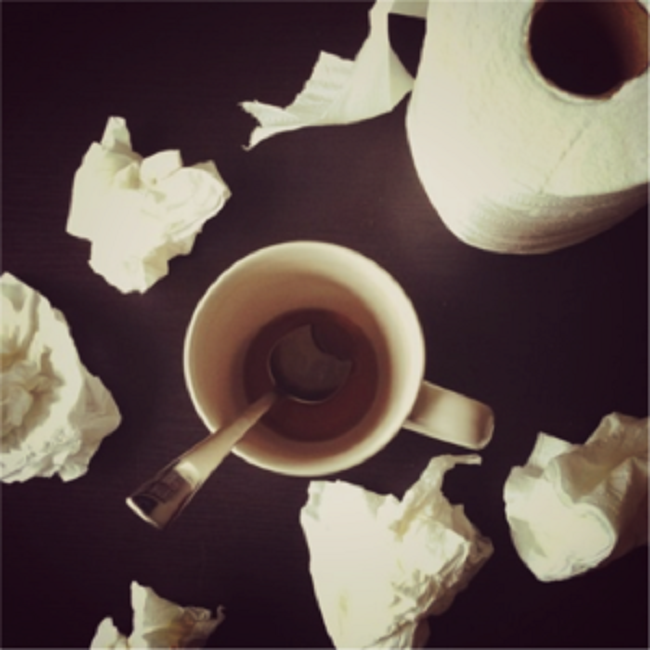

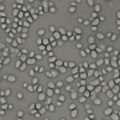
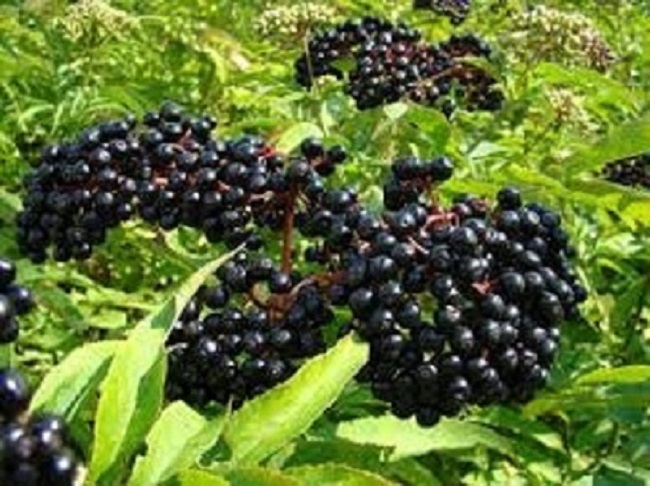

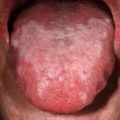

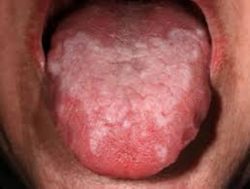
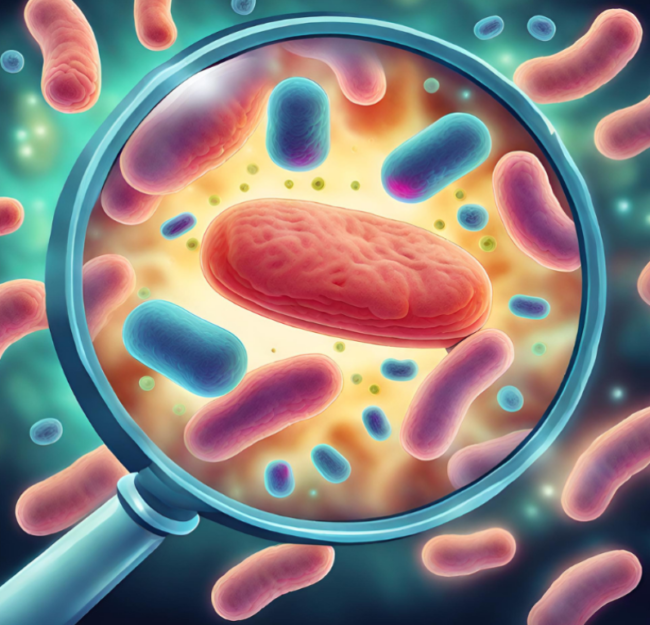





I am VERY late to the part with this post but, Brooke, in case you’re still reading… Uva Ursi extract is a very effective remedy for UTI. You can find uva ursi in most herbal urinary health remedies but, in my experience, the uva ursi alone will be quite effective and very quickly.
Also, I would point out that using 100% cranberry juice (versus any commercial cranberry juice that is mostly grape juice and sugar) is most effective for UTI. This is a VERY potent product, super bitter, but tolerable diluted in water or taken as a ‘shot’ with a big water back.
These two products used together will pretty much end the worst UTI symptoms in a day or two; probably wise to continue treatment for five days or so to promote full healing.
Thanks for your article. This “news” needs to go back to the common person, the family, the school nurse, the grocer, our entire culture. Herbs and foods heal! We have gone so far from the power of evolution, cooperative evolution tied to mother nature and Homo Sapiens learning the craft of healing and health via nature.
Even conservative and mainstream Huffington Post run articles on the power of nature taking care of us, our bodies and minds and guts to be specific:
https://www.huffingtonpost.com/2012/11/08/healthy-herbs-spices-healthiest_n_2089007.html?slideshow=true#gallery/261867/0
I’ll cut and paste these 25 foods that heal. Research and find your local sources for some of these seeds, flowers, stalks, fruits, rhizome, tubers. From Patricia Fitzgerald:
Anise
Anise seeds provide a sweet taste similar to that of black licorice when used in foods. They can calm an upset stomach and help with coughs and runny noses. Thanks to presumed estrogen-like properties, anise may increase milk flow in breastfeeding mothers, treat menstrual symptoms and boost libido, according to WebMD. It’s also a good source of fiber and calcium, among other nutrients, and a very good source of iron, with 2.4 milligrams in just one tablespoon.
Ashwagandha
The leaf and berry are helpful in treating a vast array of ailments: calming anxiety, lowering inflammation and blood pressure and strengthening the immune system,
Astragalus
This root is often used in Chinese medicine, treating conditions related to cold and allergies,
Burdock
It’s possible to cook and eat the root of this plant as food, but, along with its leaves and seeds, it’s also used in supplement form, mainly to fight bacteria and inflammation and to “detox” the body.
Calendula
The petals of this flowering plant (a relative of the garden-variety marigold) are full of the plant-based antioxidants known as flavonoids, which fight germs and inflammation, according to the University of Maryland Medical Center. Calendula is often used to help ease upset stomachs, but when applied directly to the skin, may help heal burns, cuts and bruises. It has also been used to treat a sore throat, as its anti-inflammatory properties seem to decrease the swelling there, according to WebMD.
Cilantro
Cilantro is high in vitamin K, reports Livestrong. And that, in turn, improves bone strength and helps the blood clot.
Cinnamon
There’s some research to suggest that cinnamon may lower blood sugar levels in people with type 2 diabetes and reduce cholesterol levels. It’s also a very good source of fiber, with 4 grams per tablespoon, and, because of that warm, sweet flavor, it might also satisfy your cravings for treats without adding calories or fat, Cheryl Forberg, R.D., told YouBeauty.com.
Cumin
Like cinnamon, cumin may help people with diabetes keep blood sugar levels in check. But it also has powerful germ-fighting properties that might prevent stomach ulcers, YouBeauty.com reported. Cumin is also a very good source of calcium, iron and magnesium.
Dandelion
Dandelion greens have been used in Native American and eastern medicine to help with liver, kidney and spleen problems, though there isn’t any clinical research data to support those claims. Still, according to the National Center for Complementary and Alternative Medicine, “Today, traditional or folk uses of dandelion include use as a liver or kidney ‘tonic,’ as a diuretic, and for minor digestive problems.”
Fennel
Fennel, native to the Mediterranean area, has a similar flavor to licorice, just like anise. And while both made our list, it’s for different health benefits. Fennel can help with bloating, gas and other digestion issues, according to WebMD, and may be particularly useful in quelling heartburn, Health.com reported.
Ginger
This popular, spicy root is a well-known nausea remedy for pregnancy-related illness, as well as chemotherapy and motion sickness. There is some limited evidence that it might be an effective painkiller too: treating arthritis, joint pain and muscle soreness.
Ginseng
There are a number of different types of this healthful root. American ginseng has been shown to decrease blood sugar levels in people with Type 2 diabetes, slow colorectal cancer cell growth, shorten how long that cold lingers and boost immunity. Asian ginseng also seems to boost immunity, as well as improve mental health and reduce stress. It’s what’s known as an adaptogen, which helps the body balance the natural stress response, writes Mark Hyman, M.D. The ancient (and well-studied) root has been used for more than 5,000 years for memory, energy and to combat depression, Dr. Patricia Fitzgerald, HuffPost Wellness Editor, explains.
Holy Basil
This type of basil is often used to treat high cholesterol (although the research isn’t conclusive). What’s more, according to WebMD, some
Lavender
The well-known calming and soothing effects of this plant help ease stress and promote sleep. But there are some lesser-known benefits of lavender. Eating it, as part of a spice mix, can help beat bloating, Health magazine reported, thanks to its antioxidants known as polyphenols. And, in oil form, it can stop itching and swelling when applied to the skin.
Licorice
You’re likely more familiar with licorice in candy form, but licorice root makes for a sweet treatment for coughs, asthma and heartburn, according to the University of Maryland Medical Center. It may also help whittle your middle: A small 2003 study found that people who consumed 3.5 grams a day of a “commercial preparation of licorice” had less body fat after two months.
Milk Thistle
An herb that is often processed into capsule form, milk thistle is thought to help delay the growth of cancerous tumors, thanks to its richness in the antioxidant silymarin, according to National Cancer Institute. Although studies show that milk thistle capsules can be a complimentary treatment from some cancers, the research is not conclusive enough for the FDA to approve its use. It’s also known for liver protective properties.
Mint
Mint is helpful in treating a number of digestive ailments, but most notably irritable bowel syndrome. In one 2011 study, researchers found that peppermint oil was effective in alleviating symptoms of irritable bowel syndrome.
Nutmeg
This common baking spice is a good solution for stomach problems and seems to fight off bacteria and fungi, according to WebMD. It’s a solid source of fiber, and, thanks to anti-inflammatory properties, could help smooth blemishes when applied directly to the skin, according to Glamour.
Oregano
Oregano has both antibacterial and antifungal properties that make it effective against some forms of food-borne illnesses and even some
Passionflower
Discovered in Peru in the 1500s by Spanish explorers, this flower has calming effects. It seems to increase certain chemicals in the brain that naturally ease insomnia and anxiety, according to the University of Maryland Medical Center. Experts recommend drinking a passionflower tea or trying it in capsule form.
Rosemary
This popular garden herb is rich in rosmarinic acid as well as many other antioxidants, making it fantastic against inflammation. There’s also some evidence that it stimulates the production of acetylcholine, which in turn helps boost learning and memory.
Saffron
This spice can tame PMS symptoms and help with mild to moderate depression. It’s also often used to help asthma and coughs, according to WebMD and as an aphrodisiac, but there’s little research into why.
Schizandra
You can actually eat schizandra berries, according to WebMD, but they’re also beneficial in supplement form or dried and steeped into a tea. Schizandra is most well-known for its anti-aging properties. Dr. Oz called it a “miracle pill” and a “youth-enhancer” on an episode of his show, thanks to antioxidant and anti-inflammatory properties that help the body shed toxins. It’s an adaptogen, meaning it lowers levels of the stress hormones in the blood. Schizandra has been linked in preliminary studies to treating hepatitis C. It can also boost liver function and the immune system, as well as ease anxiety, writes Fitzgerald.
Thyme
This common garden herb is full of antioxidants, like thymol, lavonoids apigenin, naringenin, luteolin, and thymonin. Antioxidants prevent cellular damage that can boost overall health and help prevent cancer, inflammation, signs of aging and more.
Turmeric
Tumeric, the main spice in curry and a relative of ginger, is used to treat everything from depression to liver disease to skin ailments, according to the National Institutes for Health. Like many folk remedies, there isn’t conclusive research on how effective the spice is against many of these maladies. But some good research shows that tumeric has helped patients
As to your last section the IC may well have been triggered because your body was trying to wash the bacterium out. Working through it by drinking plenty of water and perhaps even cranberry juice may resolve it faster.
The body will use whatever means it can to ‘purge’ itself of unwanted elements. We have been brainwashed into believing that these responses are ‘illnesses’ and should be oppressed at all costs, but inflammation, pus, sweats, fevers, zits, spots, boils, rashes, coughs, colds, vomiting, diarrhoea, and cystitis are all purging and/or healing responses. In inflammation or fevers, the body raises the core temperature around the area or the body to destroy unwanted pathogens. Lowering the inflammation stops that process and may allow the pathogen to survive.
Thank you for the added tips, Lizee! I know many who have benefited from Ayurvedic medicine and homeopathy.
I think that this is a great article and I hope everyone reads it. I have been working on this similar issue for the last two years since I repeatedly had urinary tract infections and the top doctor at the hospital remarked that I have been over prescribed antibiotics. I sat about trying to find alternative routes. I could add some other suggestions to your excellent article. There is so much that is available in the world of homeopathy, In the world of Ayurvedic medicine, and also naturopathy. Elderberry syrup made with ginger cloves cinnamon and manuka honey has been a godsend. The vitamin C needs to be whole or raw vitamin C absolutely not as obit acid. For urinary tract infection The baba Ramdev medicines from India have literally been miraculous formulae for me. Since taking them any urinary tract infections never get off the ground. A hefty dose of grape seed extract along with the vitamin C also is of a enormous benefit . Thank you Brooke for writing what you wrote. I am grateful for it and I recognize we have lots in common.